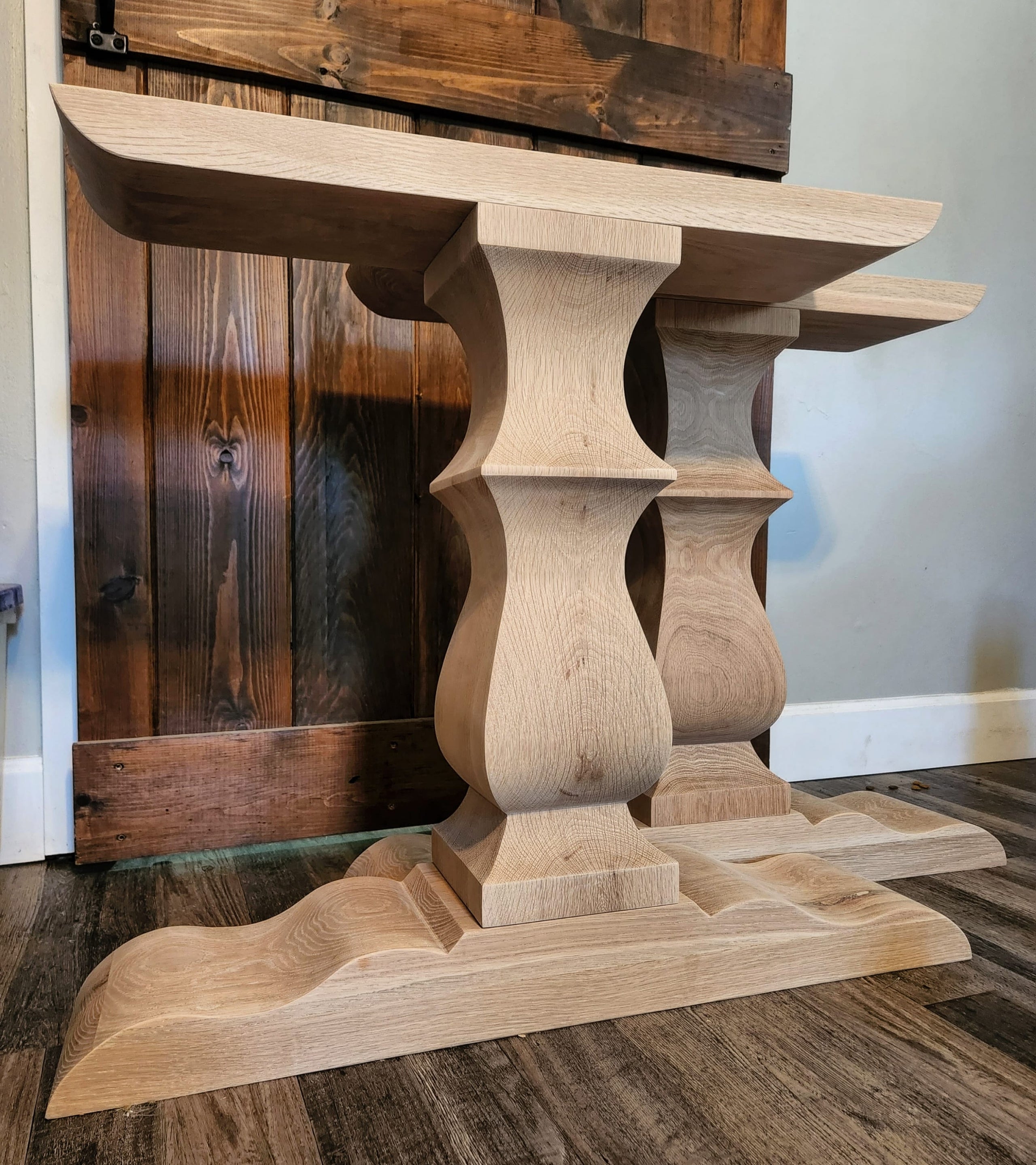From Standard to Modern: Find the Suitable Dining-room Table Legs for Your Design
While traditional styles such as cabriole and turned legs stimulate a feeling of timeless class, contemporary designs like hairpin and geometric choices present a chance for striking aesthetic interest. As you take into consideration these elements, the concern remains: just how can you seamlessly incorporate these varied leg styles to produce an unified eating experience?
Comprehending Table Leg Styles
The range of eating room table leg styles can significantly influence both the looks and performance of the room. Each leg design adds special aesthetic elements and functional functions, accommodating diverse design choices and use needs. Understanding these styles is essential for selecting the right eating table that lines up with your total interior decoration vision.
For instance, conical legs offer a tidy, traditional look that can enhance a room's elegance, while stand bases supply stability and optimize legroom, making them suitable for smaller spaces. Barrette legs, a trademark of mid-century modern layout, present an industrial panache, permitting for an airy, open feeling. Trestle legs evoke rustic beauty, offering durable assistance and a sense of eternity.
Wood legs can bring heat and texture, whereas steel alternatives frequently share a sleek, contemporary vibe. Inevitably, understanding table leg styles is necessary for creating a cohesive dining location that mirrors individual design while ensuring functionality and convenience.
Traditional Table Leg Options
When choosing dining-room table legs, traditional options commonly personify timeless beauty and workmanship. These layouts mirror an abundant heritage and a commitment to quality, making them optimal for those that value timeless aesthetics.
One of the most renowned conventional leg styles is the cabriole leg, defined by its stylish rounded shape. This style typically features attractive makings and is most commonly found in Queen Anne and Chippendale furniture. Another preferred alternative is the transformed leg, which flaunts a collection of smooth, rounded forms that offer a traditional look while maintaining stability.
Additionally, the straight leg, while easy, provides a unadorned and sturdy framework that can mix effortlessly with a range of tabletop styles. For those drawn to ornate describing, claw-and-ball feet legs stimulate a sense of splendour and can work as a stunning prime focus in any kind of dining space.
Last but not least, stand bases, although not strictly legs, provide a different typical choice that permits ample legroom and can be magnificently sculpted. Each of these conventional leg designs adds to the total setting of a dining-room, weding feature with aesthetic allure.

Modern Table Leg Styles
Modern table leg designs use a diverse array of styles that stress clean lines and cutting-edge materials. These layouts typically focus on functionality while working as striking focal points within an eating space. Minimalist aesthetics are common, with legs crafted from products such as metal, glass, and crafted timber, which add to a modern and ventilated feeling.
One prominent layout is the barrette leg, defined by its slim, conical find out structure that supplies security without overwhelming the tabletop (dining room table legs). This design is usually found in mid-century contemporary furnishings and can effortlessly match different eating table shapes. One more pattern is using geometric forms, where legs may take on unbalanced or angular kinds, adding visual rate of interest and a touch of creativity

Blending Designs for Distinct Rooms
Usually, house owners look for to develop one-of-a-kind eating spaces that mirror their personal design by blending various layout aspects. This method allows for the unification of diverse visual appeals, causing a harmonious yet distinct environment. Combining a rustic wooden table with streamlined, modern-day steel legs can develop an eye-catching contrast that boosts the room's overall charm.
Furthermore, incorporating vintage table legs with modern tabletops can stimulate a feeling of background while keeping a modern-day sensibility. Such mixes not only showcase specific preference yet likewise urge imagination, this enabling homeowners to curate a room that really feels both individual and inviting.
Shade plays a crucial duty in this mixing process; selecting table legs that complement or contrast with the existing color pattern can boost visual rate of interest. Whitewashed legs can soften the daring of a dark table surface area, developing a balanced visual.
Tips for Choosing the Right Legs
Choosing the right table legs is vital for achieving both performance and aesthetic appeal in your eating space. Begin by thinking about the general design of your area. Typical setups profit from legs that feature elaborate carvings or turned designs, while contemporary areas might call for streamlined, minimalist styles.
Following, examine the height and security of the legs. dining room table legs. Typical dining tables vary in between 28 to 30 inches in height, so make sure the legs complement this measurement for convenience. Additionally, durable products, such as hardwood or steel, can enhance security and long life
Review the leg shape too-- options consist of right, tapered, or stand layouts. Straight legs offer a classic appearance, while conical legs can include a touch of sophistication. Pedestal bases give adequate legroom and are perfect for smaller sized rooms.
Final Thought
In recap, choosing the perfect eating space table legs requires mindful factor to consider of both contemporary and conventional designs. By harmonizing leg design, height, and product with the general décor, a natural and inviting ambience can be achieved.
The selection of dining area table leg styles can significantly influence both the aesthetic appeals and functionality of the area. Ultimately, comprehending table leg designs is necessary for creating a natural dining area that mirrors personal style while ensuring functionality and convenience.One of the most renowned see here typical leg styles is the cabriole leg, defined by its elegant rounded form. Straight legs offer a traditional appearance, while tapered legs can add a touch of sophistication.In recap, selecting the suitable dining room table legs needs mindful consideration of both standard and modern-day designs.
Comments on “The Best Materials for Durable and Elegant Dining Room Table Legs”